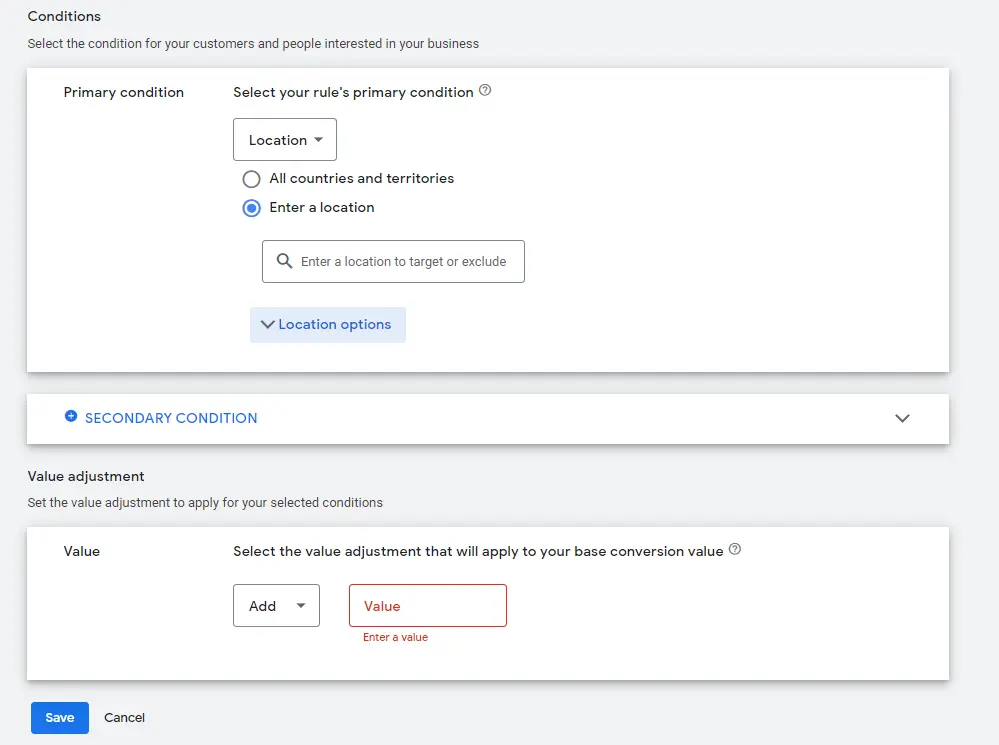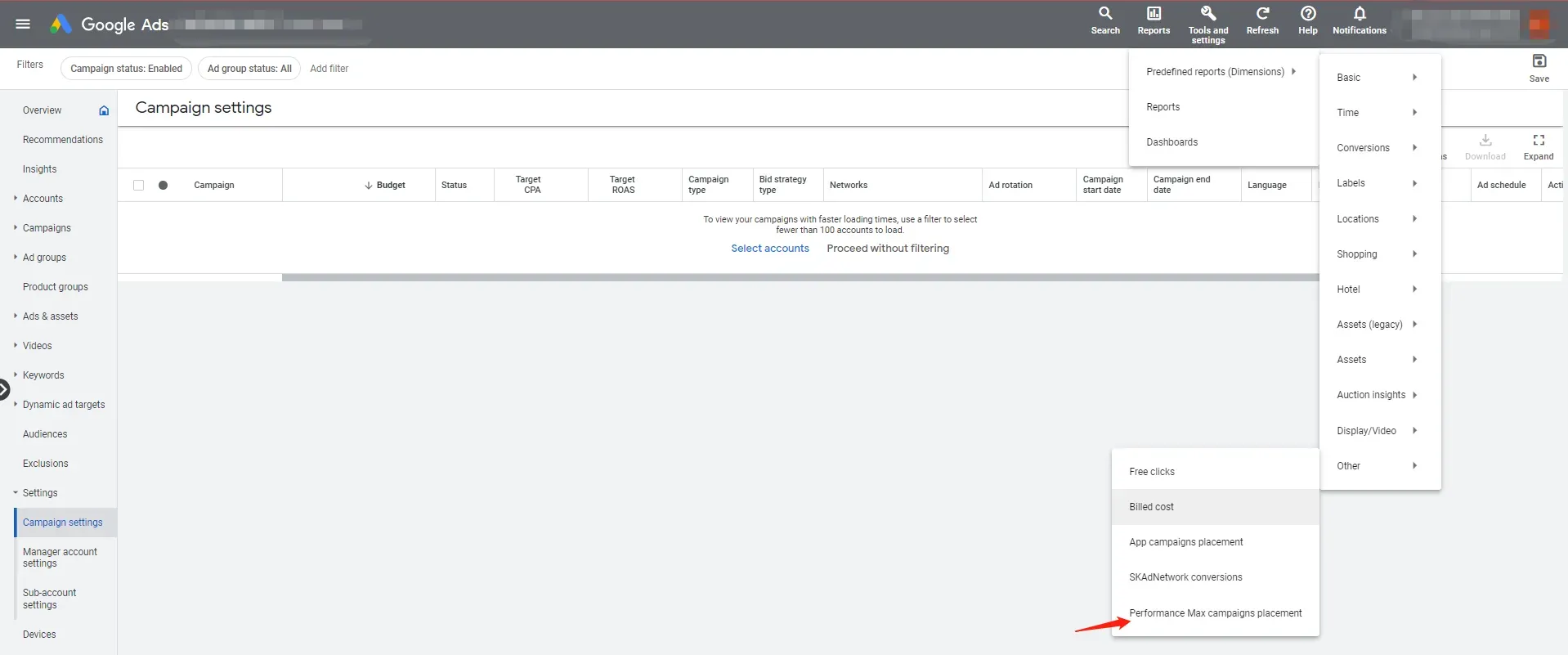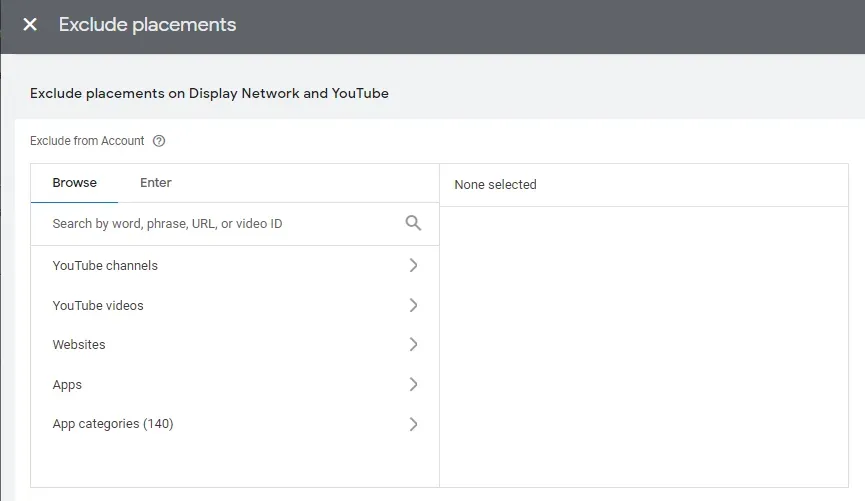Performance Max is a goal-based, AI-powered Google campaign type that aims to help businesses drive conversions and value. It is mainly designed to function across various media channels and marketing objectives. In this article, we take a deep dive into what performance max is, as well as how to optimize these campaigns to get the most out of this ad type.
What is Performance Max?
Performance Max (PMax) refers to a new kind of Google Ads campaign that leverages Google machine learning to help optimize bidding strategies and ad placements. This lets performance advertisers get all their Google Ads inventory from a single campaign. As PMax is a goal-based campaign type, it can be seen as a replacement for Smart Shopping campaigns. In fact, Google automatically upgraded Smart Shopping campaigns to PMax last September.
PMax allows businesses to increase the visibility of their ads by letting them engage with their customers across all of Google’s networks. Furthermore, PMax uses machine learning algorithms that can help to precisely predict which audiences, ads and other creative combinations work best for a business’s specific goals. It also offers customization options, that when combined with its real-time insights into preferences, user intent, and audience signals, can help to maximize audience reach and potentially boost conversions for a business.
Should advertisers rely on Google’s machine-learning capabilities?
There is no doubt that PMax can reach customers a lot more efficiently and at scale across Google’s properties by using smart bidding strategies and adjusting ad creatives. Nevertheless, just because the ad campaigns utilize AI does not mean it is a one-and-done thing.
Marketers should not rely too heavily on machine-learning capabilities. They should still spend some time watching how their ads perform. To minimize tweaking, businesses can perhaps create ads based on past best practices, but monitoring and adjusting campaigns is crucial.
How to optimize PMax campaigns
When running a PMax campaign, here are a few best practices below to help you optimize and elevate it.
Run it alongside Search Campaigns
PMax is designed to complement keyword-based search marketing campaigns to help marketers and businesses find more customers with higher conversion rates across all of Google’s channels. Therefore, PMax should be seen as an addition to existing campaign types.
Create multiple PMax campaigns for different goals
For instance, some e-commerce companies set different goals for various product categories. By splitting these products into different campaigns with various ROAS (Return on Ad Spend) goals, advertisers can maximize their potential profits. Additionally, seasonal products offered by businesses may require different budget adjustments compared to regular products.
Use as many assets as possible
Assets are made from information about a business and are used by Google to create ads. These include descriptions, headlines, call buttons, location information, links to specific parts of a business’s website, and more. They are then matched by Google’s machine learning.
These assets are used for display, dynamic search, and video ads to increase traffic to a particular website. Therefore, it is essential to include relevant assets. According to Google, businesses should add at least 20 text assets, 7 image assets, and 1 video asset to their asset group. Currently, for PMax campaigns, videos will be put as a priority to help drive more traffic.
Add audience signals
Audience signals allow Google’s machine learning algorithms to make better-informed decisions when it comes to optimizing ad targeting and delivery. This ultimately leads to better advertising results.
By specifying audience segments, such as affinity, in-market, or remarketing audiences, businesses can customize campaign messages and creatives to better resonate with target audiences. This will result in a more relevant advertising experience, leading to a potential increase in conversions and engagement.
For instance, a luxury furniture dealer who wants to promote their new product may consider utilizing first-party data, such as people who have bought their products in the past. In this case, Google can help the furniture dealer target similar audiences in their campaigns. They may also want to select the demographic option of household income, because those with high income are more likely to purchase a luxury sofa.
Do not include underperforming Geo locations
PMax mainly uses automated bidding, so it does not support geographic bid adjustments. Regardless, businesses can still utilise geographic data in two different ways. The first is by excluding geographies that are not driving conversions. The second is by using conversion value rules to manipulate the conversion values of various geographies to adjust the bids accordingly. For instance, assigning higher conversion values to conversions in well-performing geographies.

Add account-level negative keywords
Businesses and marketers can also reach out to Google’s support team asking them to attach one of their shared negative lists to their PMax campaigns. These PMax campaigns can then be used with the shared negative keyword list.
Include account-level placement exclusions
Businesses can find the PMax campaign placement reports in the reporting toolbar. This is where they can see what placements are showing in their ads. This is a good starting point for businesses to find poorly performing placements to exclude.


The bottom line
Overall, PMax campaigns offer an efficient and streamlined way for businesses and advertisers to meet their objectives. This approach allows marketers to reach potential consumers at various touchpoints in their online journey, leading to better conversions and engagement.
When running PMax campaigns, businesses and advertisers should not rely too heavily on machine-learning algorithms. They should still carefully assess their target audience, goals, creative assets, and more to ensure their approach aligns with their specific needs and goals. Regular monitoring is vital to optimize the campaign to make sure it delivers the desired results.
Set up your PMax Campaign with MediaGroup
Considering taking a new approach to paid advertising to expand your reach online? At MediaGroup, we have an experienced team of Paid Advertising specialists who run campaigns around the world, including PMax. Contact us today for a consultation.
Popular categories:
The Memorable Marketing by MediaGroup podcast series interviews leading senior marketers worldwide on all things marketing, campaigns, strategy, building awareness and everything that makes a brand successful.
Join the conversation by leaving your thoughts and questions, and we will be happy to chat with you. If you want to discuss your business marketing strategies in more detail or join our podcast as a guest, please reach out to us at: [email protected]
Latest Insights
Article
Account Management as a bridge between marketing agencies and clients
Account managers are a vital part of an agency’s team, as they focus on serving customers and building relationships with them. This department is the bridge between clients and specialists. That said, managing client accounts can come with its own challenges. Here, we look at how to organise the process and maintain a healthy client-agency relationship.
Written by Ulkar Azizova
Quarterly marketing insights in our newsletter
We are committed to helping you get the best results in your digital marketing game. Our experts will give you actionable insights and knowledge, based on our experience, to tackle the biggest marketing challenges. Unsubscribe at any time.
Mediagroup Worldwide processes the above information in order to subscribe you to the newsletter. Privacy Policy
